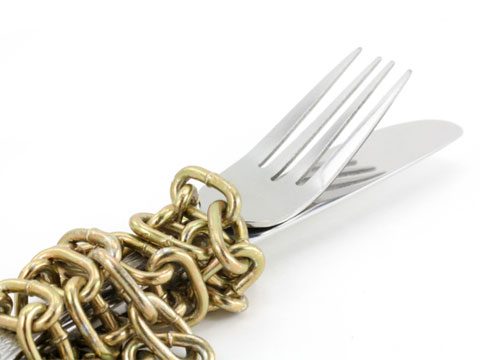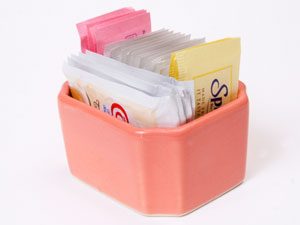About half of us regularly take at least one vitamin, herbal or nutritional supplement – whether for sore joints, colds and flu, bone health, heart worries or general stress. But it pays to consider what you really need

THE LOWDOWN
Ask most nutritionists and they’re likely to put good health down to well-balanced eating.
“Food contains both macronutrients and micronutrients,” says Charlotte Lin, a dietitian at the National University Hospital (NUH) of Singapore. “By taking only vitamins, which are a sub component of micronutrients, your body is missing out on carbohydrates, fats and protein, which are essential for bodily function.”
Dr Lee Chee Peng, president of the Malaysian Society of Complementary Medicine, says people who eat three balanced meals are unlikely to require multivitamin supplements. The exceptions are individuals who exercise more than five days a week or patients under treatment or recovering from a disease. These individuals will be prescribed specific vitamins, he explains, but most people fare just fine.
So, what’s behind our growing love affair with multivitamins? In 2002, Harvard Medical School recommended that everybody, regardless of age or health status, take a daily dietary supplement. The advice is still considered controversial, but experts say that people across Asia generally view multivitamins as “healthy”, and as a form of nutritional insurance against a less than perfect diet.
Says Mandy Sea, principal nutritionist of the Centre for Nutritional Studies at the Chinese University of Hong Kong, “Generally a supplement containing 100 percent of the daily value of most vitamins and essential minerals is adequate.”
Supplements on the market today include those that use natural herbs or synthetic ingredients. Experts point out that when choosing between multivitamins, those containing natural herbs may not necessarily be better than those with synthetic ingredients. The body recognises the molecular weight and structure of each vitamin and mineral for their functions regardless of whether the vitamins come from synthetic or natural sources, explains Dr Lee.
NUH dietitian Lin adds that the chemical makeup of the herbs also varies depending on where it’s grown and how it’s been processed.
HOW TO CHOOSE?
If you decide to take a multivitamin, how do you choose from the dozens on the market?
Keep it simple. Look for one that provides close to the recommended daily intake (RDI) – at least 75 percent – of the vitamins and minerals you need. But try to avoid products that contain large doses of vitamin or mineral supplementation. High dosages of certain vitamins or minerals may interfere with the absorption of other important nutrients, explains Sea.
“Excessive amounts of zinc and vitamin E may interfere with iron absorption; excessive calcium supplementation may decrease iron absorption, leading to iron deficiency anaemia.” So check the label for the precise contributions to your RDI.
LET’S GET SPECIFIC
Some nutritionists feel that formulas designed to prevent specific conditions may be a better choice than a general pill that tries to cover all bases. Lin suggests that if you are concerned about bone health and osteoporosis, for instance, you are far better off selecting a vitamin D and calcium supplement, rather than a general multivitamin: “The dosage of these specific nutrients may not be sufficient in a general pill,” says Lin.
Other specific formulas of value are preconception supplements with a good amount of folic acid, and omega-3 fatty acid fish oil supplements. Research has shown that folic acid supplements before and during pregnancy helps to significantly reduce the incidence of neural tube defects, says Lin. That’s when it pays to be discerning.
Supplements aimed at helping with stress, energy and metabolism commonly contain vitamin B.
“B-group deficiencies are not common in Singapore,” notes Lin. Vegans are susceptible to B12 deficiencies; the elderly and athletes are more likely to have B-group deficiencies due to decreased gut absorption and increased needs for energy production respectively, explains Lin.
Lin also cautions against wishful thinking, particularly where vague lifestyle ailments are the problem: “Stress needs to be managed through lifestyle changes and cannot be modified through dietary means.”
WHAT ARE THE GOOD OILS?
It’s hard not to be impressed by the omega-3 benefits fish oil boasts. Studies suggest fish oil reduces heart problems and may help with joint health, depression and weight loss. What’s less well known is the fact that the fats in fish oil are unstable – they are quick to oxidise. Oxidation begins during extraction and processing, and continues when the product is sitting on supermarket and pantry shelves.
“Although no studies to date have conclusively proved that oxidised fish oils cause atherosclerosis [hardened arteries], it is known that oxidised lipids can contribute to the kind of damage seen in atherosclerosis,” says Dr Karen Silvers, a senior research fellow at the School of Medicine and Health Sciences at the University of Otago in Christchurch, New Zealand.
Her advice? “Eat fresh fish or other foods naturally rich in omega-3 fatty acids. Buy fish oil capsules with the longest ‘best before’ date possible and never consume fish oil beyond or even near that date.” It may be worth buying smaller bottles (250ml) or a 60-capsule pack so the oil is used in a short time.
Fish liver oils may be easy to confuse with pure fish oils, but they are not the same thing. Fish liver oils – such as cod liver oil and halibut liver oil – contain vitamin A that can be toxic at high doses. Fish liver oils taken in the doses recommended for pure fish oil may exceed the RDI of vitamin A.
EXPERT TIP: The very long chain of omega-3 fatty acids found in fish oils have different functions, says Silvers. This may influence the type of omega-3 rich supplement you choose to use. “EPA is more anti-inflammatory, whereas DHA has been shown to beimportant for healthy heart function.”
ABSORPTION
Even though vitamins and minerals in supplements are synthesised to the exact chemical composition of naturally occurring vitamins, they still don’t seem to work as well. The exception is folate. The synthetic form – folic acid – that you find in supplements is more stable than naturally occurring folate from food sources, says Sea, as naturally occurring folate can be easily destroyed during food preparation and processing.
If you’re considering a formula with iron – often a need for premenopausal women – look for it in the form of ferrous sulphate that is easily absorbed. Taking it with a piece of fruit – a source of vitamin C – will boost absorption. But get a blood test to check iron levels before racing ahead. Taking too much iron, especially when you don’t have a deficiency may lead to diarrhoea, constipation or abdominal discomfort, says Lee.
WHEN TO TAKE IT
When you consider the vitamins and minerals in a good, balanced diet, some nutrients will always cancel out others. The important thing is to understand when to take the supplements so that the nutrients can be better absorbed. “Calcium absorption is enhanced if the supplements are taken after a meal,” says Lin. “Iron supplements should be taken on an empty stomach.”
TOO MUCH HARM
High-dose antioxidant supplements may not be as effective against disease prevention as once hoped. Vitamin E is one of the most widely used supplements, but research suggests too much may cause harm. Vitamin A and beta carotene is another group of vitamins that has also received its share of scrutiny for increasing cancer risk in some groups. Recently, folic acid was added to the list of supplements we should “handle with care”. Studies have linked high intakes to colon polyps and researchers have speculated it may lead to an increase in colorectal cancers.
If you’re planning pregnancy, or are pregnant, aim for 600mcg a day; everyone else should try for 400mcg daily, the amount in a standard multivitamin.
The same applies to vitamin E. Higher doses may help prevent heart disease, but the amount in a standard multivitamin is enough to have health benefits.





































